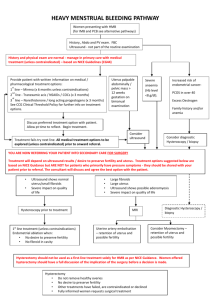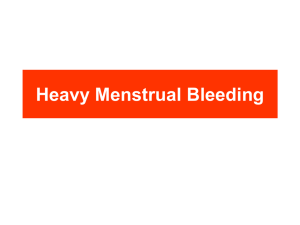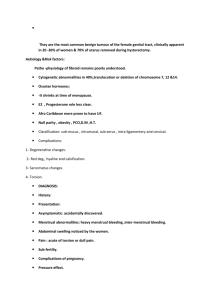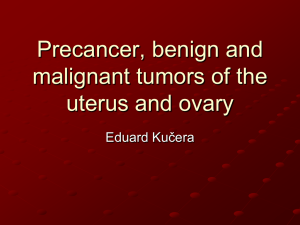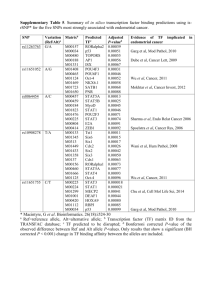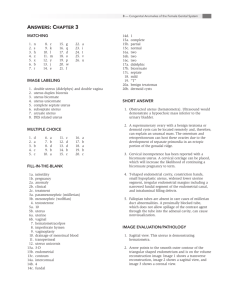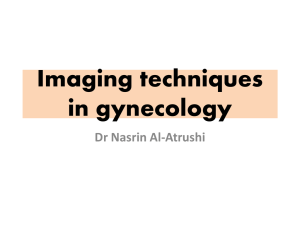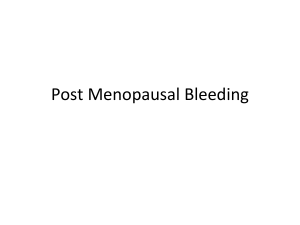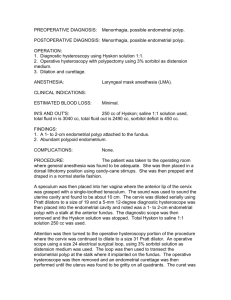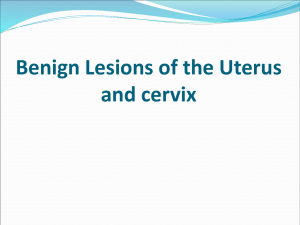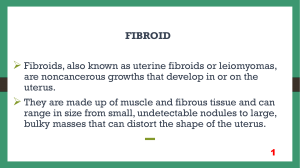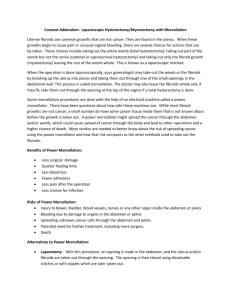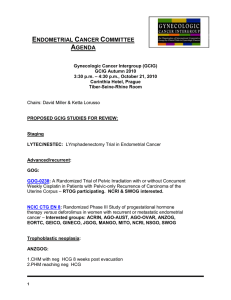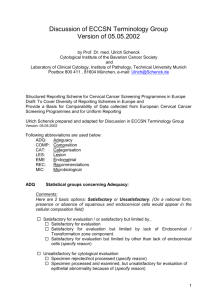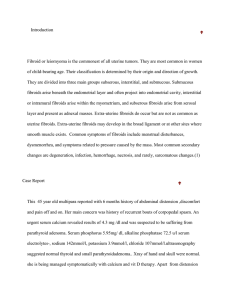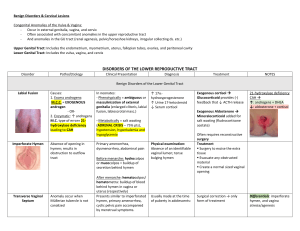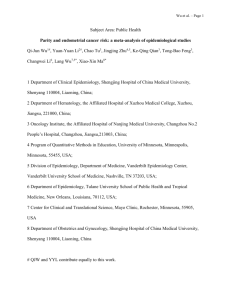Heavy Menstrual Bleeding Pathway
advertisement
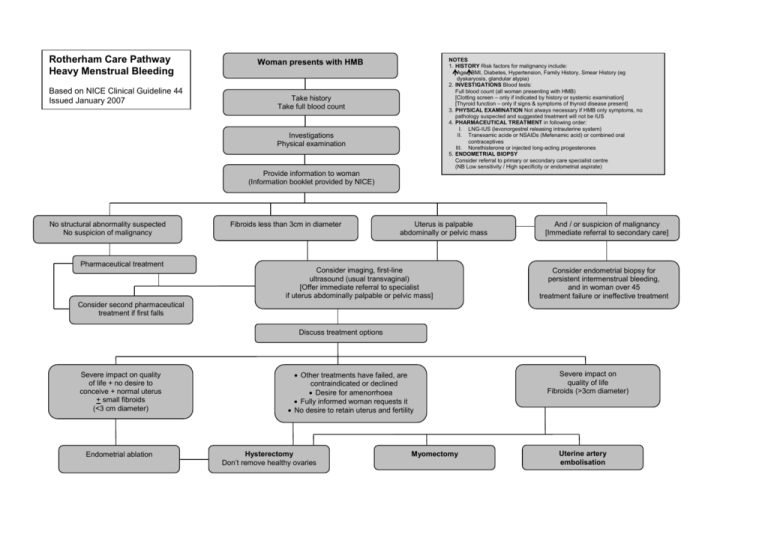
Rotherham Care Pathway Heavy Menstrual Bleeding Based on NICE Clinical Guideline 44 Issued January 2007 NOTES 1. HISTORY Risk factors for malignancy include: Age, BMI, Diabetes, Hypertension, Family History, Smear History (eg dyskaryosis, glandular atypia) 2. INVESTIGATIONS Blood tests: Full blood count (all woman presenting with HMB) [Clotting screen – only if indicated by history or systemic examination] [Thyroid function – only if signs & symptoms of thyroid disease present] 3. PHYSICAL EXAMINATION Not always necessary if HMB only symptoms, no pathology suspected and suggested treatment will not be IUS 4. PHARMACEUTICAL TREATMENT in following order: I. LNG-IUS (levonorgestrel releasing intrauterine system) II. Tranexamic acide or NSAIDs (Mefenamic acid) or combined oral contraceptives III. Norethisterone or injected long-acting progesterones 5. ENDOMETRIAL BIOPSY Consider referral to primary or secondary care specialist centre (NB Low sensitivity / High specificity or endometrial aspirate) Woman presents with HMB Take history Take full blood count Investigations Physical examination Provide information to woman (Information booklet provided by NICE) No structural abnormality suspected No suspicion of malignancy Pharmaceutical treatment Fibroids less than 3cm in diameter Uterus is palpable abdominally or pelvic mass Consider imaging, first-line ultrasound (usual transvaginal) [Offer immediate referral to specialist if uterus abdominally palpable or pelvic mass] And / or suspicion of malignancy [Immediate referral to secondary care] Consider endometrial biopsy for persistent intermenstrual bleeding, and in woman over 45 treatment failure or ineffective treatment Consider second pharmaceutical treatment if first falls Discuss treatment options Severe impact on quality of life + no desire to conceive + normal uterus + small fibroids (<3 cm diameter) Endometrial ablation Other treatments have failed, are contraindicated or declined Desire for amenorrhoea Fully informed woman requests it No desire to retain uterus and fertility Hysterectomy Don’t remove healthy ovaries Myomectomy Severe impact on quality of life Fibroids (>3cm diameter) Uterine artery embolisation
